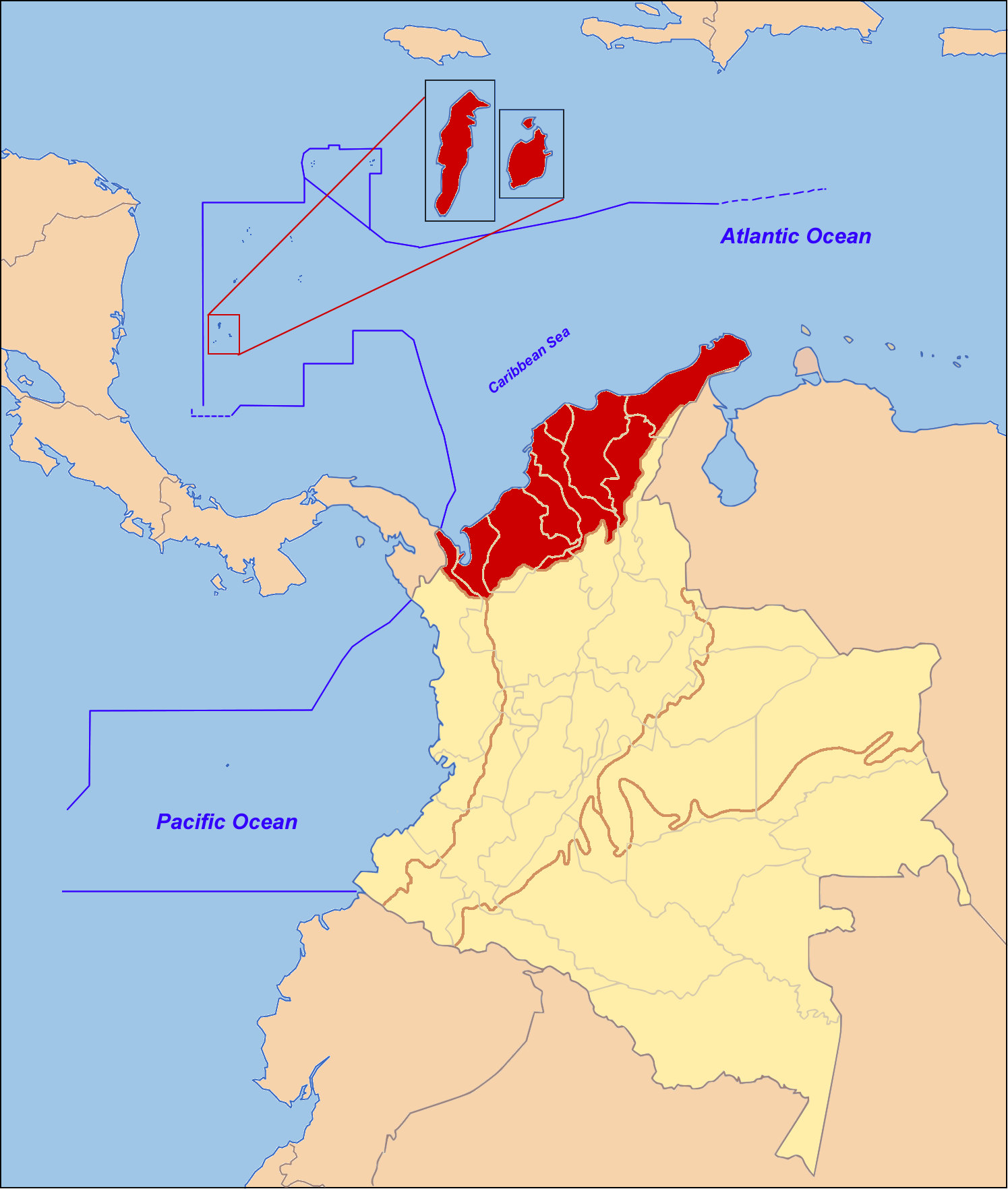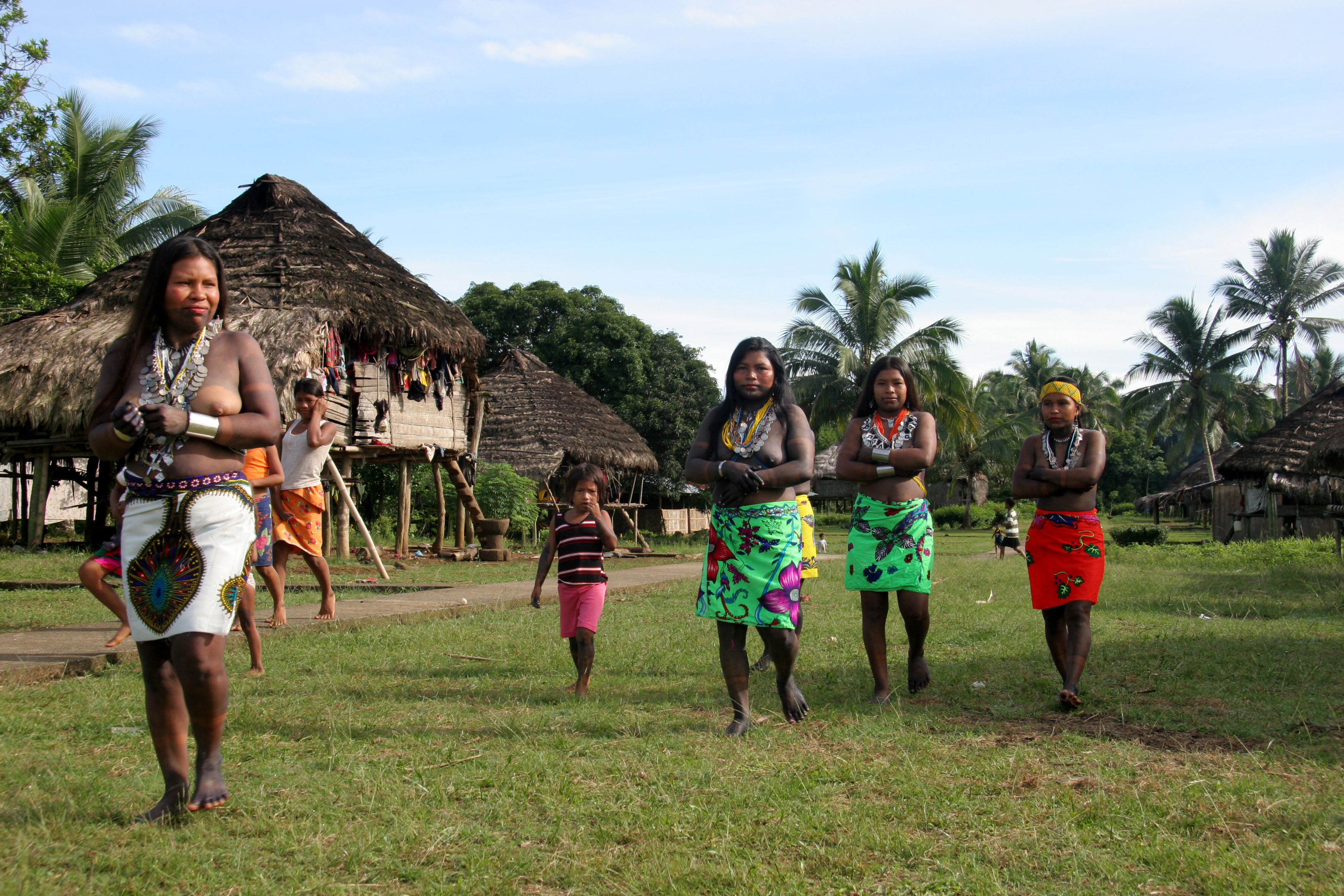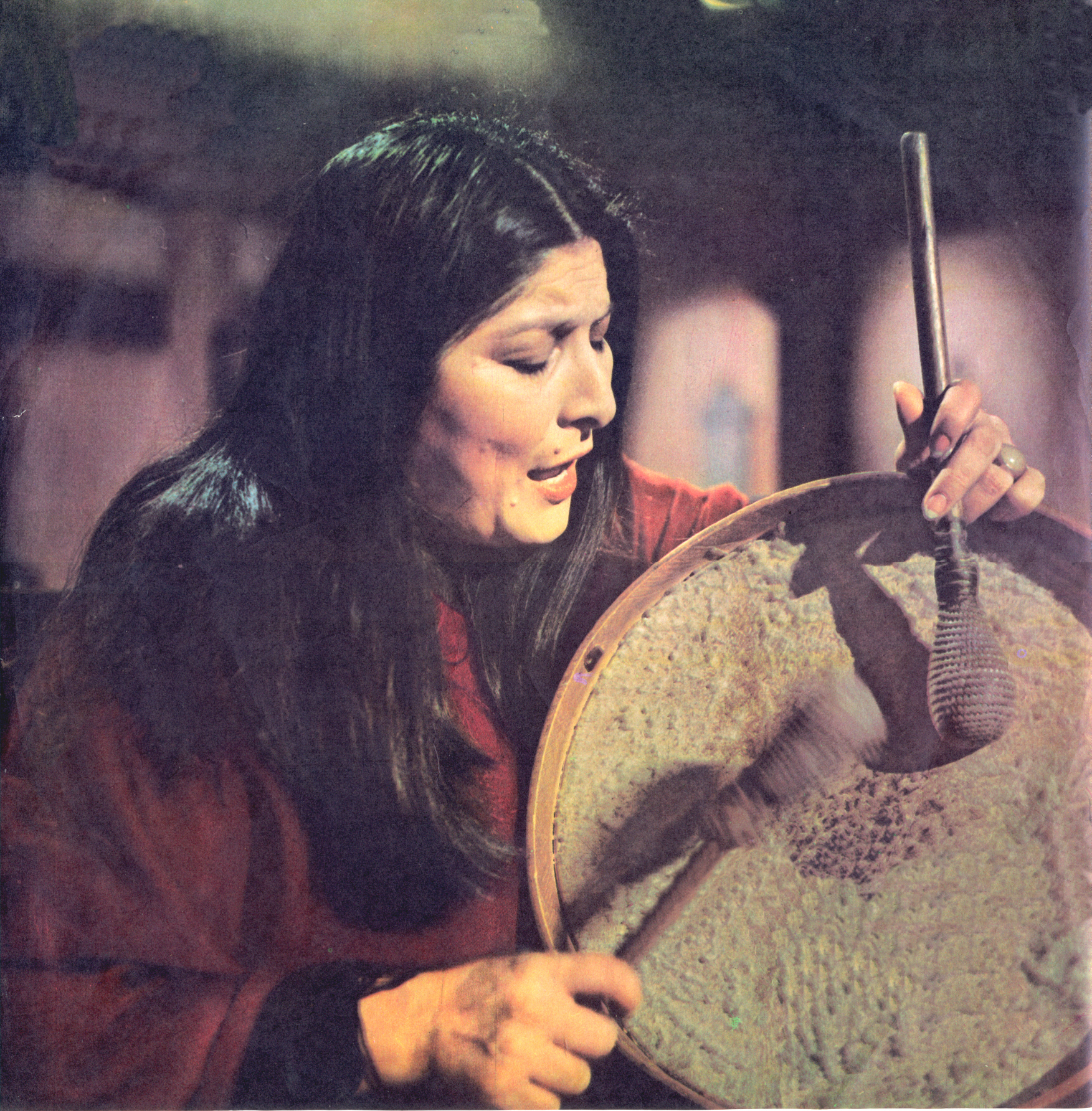|
Bullerengue
Bullerengue is a traditional musical genre and dance from the Caribbean Region of Colombia and the Darién Province in Panama. It is sung and preserved primarily by elderly women, accompanied by local artisan drums, and developed in the Palenques or Maroon communities. Some renowned bullerengue singers are Petrona Martinez, Irene Martinez, Emilia Herrera, Estefanía Caycedo, Etelvina Maldonado, and Ceferina Banquez. In recent decades, Petrona Martínez and Totó la Momposina have increased Bullerengue's international popularity and success, the former having been granted the Latin Grammy Award for Best Folk Album The Latin Grammy Award for Best Folk Album is an honor presented annually at the Latin Grammy Awards, a ceremony that recognizes excellence and creates a wider awareness of cultural diversity and contributions of Latin recording artists in the Un .... References * {{Cumbia Colombian styles of music Cumbia music genres ... [...More Info...] [...Related Items...] OR: [Wikipedia] [Google] [Baidu] |
Totó La Momposina
Sonia Bazanta Vides (born 1 August 1940), better known as Totó la Momposina, is a Colombian singer of Afro-Colombian and Indigenous descent. She reached international attention with the release of her 1993 album ''La Candela Viva'' on Peter Gabriel's Real World Records label.Biography at Real World. Totó accompanied to receive the in 1982 as part of a Colombian cultural delegation performing during the award ceremony. Biography Totó was born in the northern Colombian ...[...More Info...] [...Related Items...] OR: [Wikipedia] [Google] [Baidu] |
Maroon (people)
Maroons are descendants of Africans in the Americas who escaped from slavery and formed their own settlements. They often mixed with indigenous peoples, eventually evolving into separate creole cultures such as the Garifuna and the Mascogos. Etymology ''Maroon'', which can have a more general sense of being abandoned without resources, entered English around the 1590s, from the French adjective , meaning 'feral' or 'fugitive'. (Despite the same spelling, the meaning of 'reddish brown' for ''maroon'' did not appear until the late 1700s, perhaps influenced by the idea of maroon peoples.) The American Spanish word is also often given as the source of the English word ''maroon'', used to describe the runaway slave communities in Florida, in the Great Dismal Swamp on the border of Virginia and North Carolina, on colonial islands of the Caribbean, and in other parts of the New World. Linguist Lyle Campbell says the Spanish word ' means 'wild, unruly' or 'runaway slave'. In ... [...More Info...] [...Related Items...] OR: [Wikipedia] [Google] [Baidu] |
Caribbean Region Of Colombia
The Caribbean region of Colombia or Caribbean coast region is in the north of Colombia and is mainly composed of 8 departments located contiguous to the Caribbean. MEMO: Natural Regions of Colombia Memo.com.co Accessed 22 August 2007. The area covers a total land area of , including the in the and corresponding to approximately 1/10 of the total territory of Colombia. The Caribbean region of Colom ... [...More Info...] [...Related Items...] OR: [Wikipedia] [Google] [Baidu] |
Percussion Instrument
A percussion instrument is a musical instrument that is sounded by being struck or scraped by a beater including attached or enclosed beaters or rattles struck, scraped or rubbed by hand or struck against another similar instrument. Excluding zoomusicological instruments and the human voice, the percussion family is believed to include the oldest musical instruments.''The Oxford Companion to Music'', 10th edition, p.775, In spite of being a very common term to designate instruments, and to relate them to their players, the percussionists, percussion is not a systematic classificatory category of instruments, as described by the scientific field of organology. It is shown below that percussion instruments may belong to the organological classes of ideophone, membranophone, aerophone and cordophone. The percussion section of an orchestra most commonly contains instruments such as the timpani, snare drum, bass drum, tambourine, belonging to the membranophones, and cym ... [...More Info...] [...Related Items...] OR: [Wikipedia] [Google] [Baidu] |
Artisan Drums
An artisan (from french: artisan, it, artigiano) is a skilled craft worker who makes or creates material objects partly or entirely by hand. These objects may be functional or strictly decorative, for example furniture, decorative art, sculpture, clothing, food items, household items and tools and mechanisms such as the handmade clockwork movement of a watchmaker. Artisans practice a craft and may through experience and aptitude reach the expressive levels of an artist. History The adjective "artisanal" is often used in describing hand-processing in contrast to an industrial process, such as in the phrase ''artisanal mining''. Thus, "artisanal" is sometimes used in marketing and advertising as a buzz word to describe or imply some relation with the crafting of handmade food products, such as bread, beverages or cheese. Many of these have traditionally been handmade, rural or pastoral goods but are also now commonly made on a larger scale with automated mechanization ... [...More Info...] [...Related Items...] OR: [Wikipedia] [Google] [Baidu] |
Maracas
A maraca (), sometimes called shaker or chac-chac, is a rattle which appears in many genres of Caribbean and Latin music. It is shaken by a handle and usually played as part of a pair. Maracas (from Guaraní ), also known as tamaracas, were rattles of divination, an oracle of the Brazilian Tupinamba people, found also with other Indigenous ethnic groups, such as the Guarani, Orinoco and in Florida. Rattles made from ''Lagenaria'' gourds are being shaken by the natural grip, while the round ''Crescentia'' calabash fruits are fitted to a handle. Human hair is sometimes fastened on the top, and a slit is cut in it to represent a mouth, through which their shamans (''payes'') made it utter its responses. A few pebbles are inserted to make it rattle and it is crowned with the red feathers of the (scarlet ibis). Every man had his maraca. It was used at their dances and to heal the sick. Andean curandero A ''curandero'' (, healer; f. , also spelled , , f. ) is a traditional ... [...More Info...] [...Related Items...] OR: [Wikipedia] [Google] [Baidu] |
Darién Province
Darién (, , ) is a province in Panama whose capital city is La Palma. With an area of , it is located at the eastern end of the country and bordered to the north by the province of Panamá and the region of Kuna Yala. To the south, it is bordered by the Pacific Ocean and Colombia. To the east, it borders Colombia; to the west, it borders the Pacific Ocean and the province of Panama. The area surrounding the border with Colombia is known as the Darién Gap, a large swath of undeveloped swampland and forest. With no roads, it is the missing link of the Pan-American Highway. Place names The name originates from the language spoken by the Cueva, an Indigenous tribe destroyed by the white European conquistadors during the 16th century. The Tanela River, which flows toward Atrato, was Hispanicized to Darién; the region and its communities took the same name. Santa María la Antigua del Darién, the first city founded in Tierra Firme, also took its name from the river. Subsequentl ... [...More Info...] [...Related Items...] OR: [Wikipedia] [Google] [Baidu] |
Panama
Panama ( , ; es, link=no, Panamá ), officially the Republic of Panama ( es, República de Panamá), is a transcontinental country spanning the southern part of North America and the northern part of South America. It is bordered by Costa Rica to the west, Colombia to the southeast, the Caribbean Sea to the north, and the Pacific Ocean to the south. Its capital and largest city is Panama City, whose metropolitan area is home to nearly half the country's million people. Panama was inhabited by indigenous tribes before Spanish colonists arrived in the 16th century. It broke away from Spain in 1821 and joined the Republic of Gran Colombia, a union of Nueva Granada, Ecuador, and Venezuela. After Gran Colombia dissolved in 1831, Panama and Nueva Granada eventually became the Republic of Colombia. With the backing of the United States, Panama seceded from Colombia in 1903, allowing the construction of the Panama Canal to be completed by the United States Army Corps of En ... [...More Info...] [...Related Items...] OR: [Wikipedia] [Google] [Baidu] |
Latin Grammy Award For Best Folk Album
The Latin Grammy Award for Best Folk Album is an honor presented annually at the Latin Grammy Awards, a ceremony that recognizes excellence and creates a wider awareness of cultural diversity and contributions of Latin recording artists in the United States and internationally. The award goes to solo artists, duos, or groups for releasing vocal or instrumental albums containing at least 51% of new recordings. The award was first presented to Argentine singer Mercedes Sosa for the album ''Misa Criolla'' at the 1st Latin Grammy Awards ceremony in 2000. She also happens to be the most nominated and awarded performer in this category with five accolades. Her album '' Cantora 1'' became the first folk album to be nominated for Album of the Year in 2009 but lost to Calle 13's ''Los de atrás vienen conmigo''. In 2011 she became the first artist to receive this award posthumously for the album ''Deja La Vida Volar''. On the other hand, Peruvian singer Eva Ayllón holds the record ... [...More Info...] [...Related Items...] OR: [Wikipedia] [Google] [Baidu] |
Colombian Styles Of Music
Colombian may refer to: * Something of, from, or related to the country of Colombia * Colombians, persons from Colombia, or of Colombian descent **For more information about the Colombian people, see: *** Demographics of Colombia *** Indigenous peoples in Colombia, Native Colombians *** Colombian American ** For specific persons, see List of Colombians * Colombian Spanish, one of the languages spoken in Colombia ** See also languages of Colombia * Colombian culture * Colombian sheep, a sheep breed See also * * * Christopher Columbus (1451–1506), Italian explorer after which Colombia was named * Coffee production in Colombia * Colombia (other) * Colombiana (other) * Colombina (other) * Colombino (other) * Colombine (other) * Columbia (other) * Columbiad (other) * Columbian (other) * Columbiana (other) * Columbine (other) * Columbina (other) Columbina is a stock characte ... [...More Info...] [...Related Items...] OR: [Wikipedia] [Google] [Baidu] |



